Plants aren’t just limited to the land. Some species prefer conditions near or in water, including lakes, rivers, the ocean, swamps, and even ponds. Most aquatic, or water-loving plants have distinct characteristics that distinguish them from land growers and each other.
Aquatic plants can be classified into five major types: floating, submergent, emergent, bog, and marginal. No matter which category they fall into, you can find most of them in every pond ecosystem.
If you’re looking to grow some pond plants in your backyard or homestead ponds, there are a few attractive species that you should know before adding them to your collection. With that said, let’s get down to the list.
Table of Contents
‘Pink Sensation’ Water Lily (Nymphaea pubescens)

If you’re a die-hard fan of anything in pink, then this plant should be on top of your must-have list. These emergent plants are a hybrid species created in 1947 by a hybridizer named Perry D. Slocum in the United States. ‘Pink Sensation’ water lilies are aquatic perennials with beautiful, fragrant pink flowers with silvery, rounded edges.
They usually bloom from June to September. These pond plants spread between 3 and 5 feet wide and grow underwater to around 3 feet deep. Being a hardy species, they can tolerate partial sun but prefer to be grow under full sun.
Aquatic Iris (Iris pseudacorus)
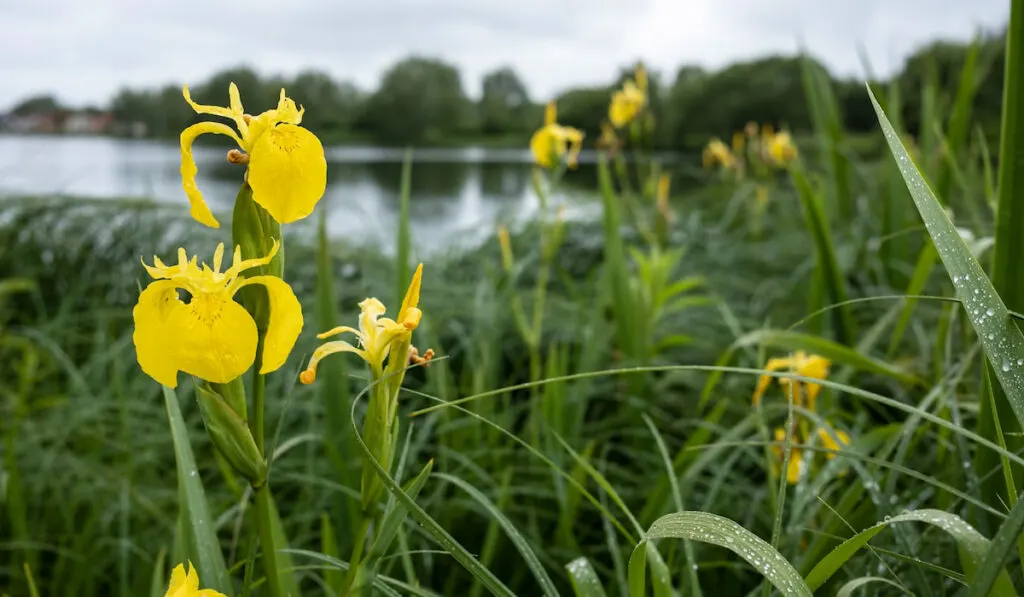
Aquatic irises are native to Europe, Western Asia, and Northwest Africa. They can be divided into two major categories: true water irises and bog irises.
True water irises thrive in deep water, while bog irises prefer shallow ponds or lakes.
Depending on the varieties, their color may vary from violet blue and copper red to bright yellow. The flowers usually bloom from spring to summer. Aquatic irises grow between 3 and 5 feet tall and spread between 1 and 2 feet.
These marginal plants thrive under partial or full sun and can tolerate salt water. However, they aren’t edible and are highly toxic. Although they are helpful in treating contaminated water bodies, aquatic irises are invasive and often outgrow and smother other plants around them.
Water Hyacinth (Pontederia crassipes)

Water hyacinths are native to South America, specifically in the Amazon basin. They were introduced into the United States in 1884 and can be found in a few states, including Florida, California, and Washington.
These floating perennial plants can be recognized by their bulb-like stems, broad green leaves, and six-petaled flowers that come in whitish lavender or pink color. They grow between 1 and 3 feet tall and sometimes up to 16 feet tall. Water hyacinths are dubbed the “terror of Bengal” for being highly invasive.
They can take up too much oxygen from under the water, leading to the suffocation and death of other aquatic creatures. When they grow, their roots create a mat-like structure that can inhibit the growth of other plants and disturb or prohibit water activities.
American Frogbit (Limnobium spongia)
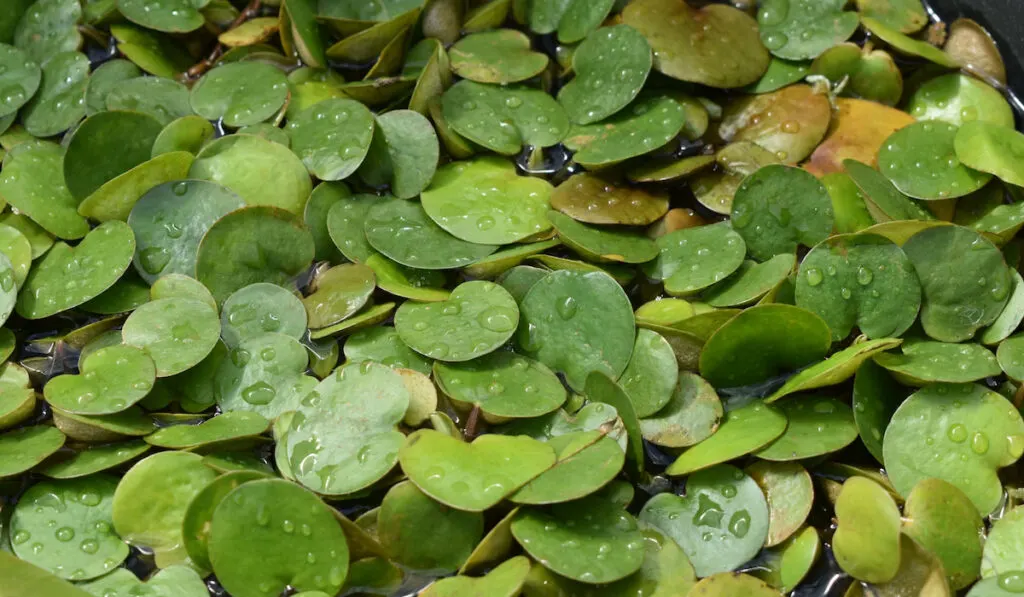
These floating spongy plants can be found in a few of their native places around the United States, in the eastern and southeastern parts. They are also known as Frogbits and American Spongeplants. There are also other non-native types of frogbit which are European frogbit and Amazon frogbit.
American frogbits are small aquatic plants that grow in hardiness zones 6 to 10 with a height between 1 and 2 inches tall. They can be distinguished by their glossy, bright green, round leaves and white flowers that usually bloom in the summer and fall.
These perennial plants can be found in many water bodies, such as ponds, lakes, swamps, and other still waters. They can tolerate partial or full sun and multiply in wet soil.
Canna (Canna indica)

Cannas are native to North and South America. They are closely related to other rhizomatous plants such as gingers, heliconias, bananas, and marantas. These large herbaceous perennials are categorized as marginal plants. Cannas typically grow between 7 and 16 feet tall and spread between 2 and 3 feet wide.
They can be recognized by their large, often variegated leaves that come in different colors, including dark green, maroon, brown, and a mix of any of these colors. These plants also produce lily-like flowers that bloom in summer.
The flowers come in different colors: yellow, orange, red, white, cream, and pink. Cannas thrive in hardiness zones 8 to 10. They prefer full sun and moist, well-drained soil, but do not need to be submerged.
Egyptian Paper Rush (Cyperus papyrus)

Egyptian paper rush plants are considered both marginal and bog plants. These aquatic perennials are native to hot tropical regions such as Africa and the Mediterranean.
They grow between 5 and 12 feet tall and spread between 2 and 5 feet wide. Some call these giant plants papyrus, paper reed, Egyptian paper reed, papyrus, and Nile grass. Egyptian paper rush possesses sprouting broom-like foliage, a slender stalk, and greenish-brown flowers in summer.
They thrive in hardiness zones 9 to 12 and can tolerate different soil acidity levels. They also love being under the full sun but can still tolerate partial sun.
Waterweed (Elodea canadensis)
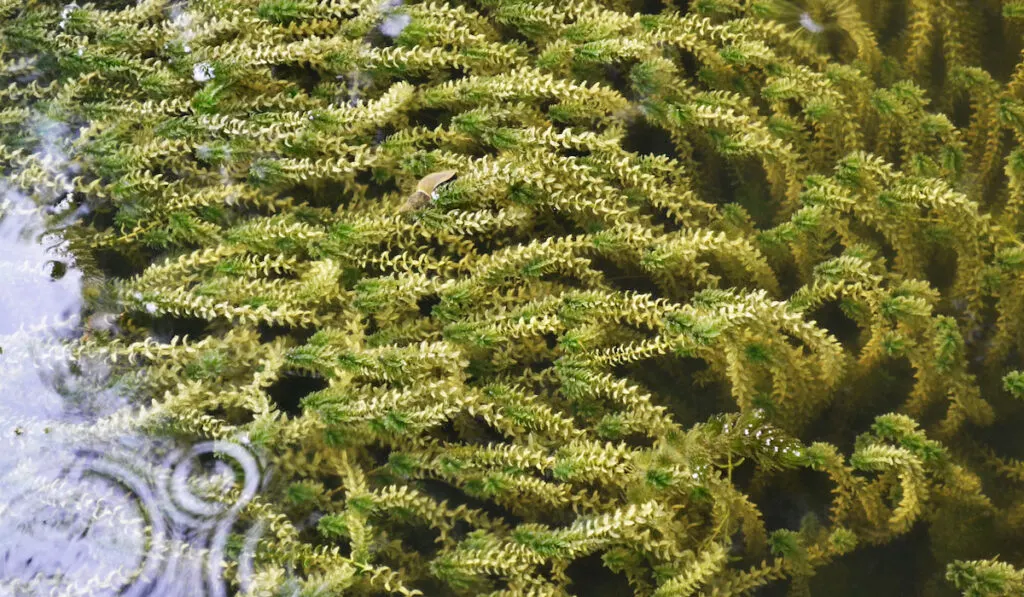
Waterweeds are native to North and South America. But they can also be found in other places, including Australia, New Zealand, Japan, Africa, and Europe. These aquatic plants are also known as Canadian waterweed, Anacharis, and European waterweed.
Waterweeds generally grow in slow-moving, deep water with a length of around 3 feet long. These submergent plants can be recognized by their sprouting, dark green oval leaves arranged all around the slender stems, and delicate white roots.
They are considered low-maintenance plants and easy to care for, especially if you intend to grow them in a small pond or aquarium. Although they provide numerous benefits to aquatic creatures, waterweeds can be invasive when allowed to grow unchecked in just one small habitat.
Pickerelweed (Pontederia cordata)
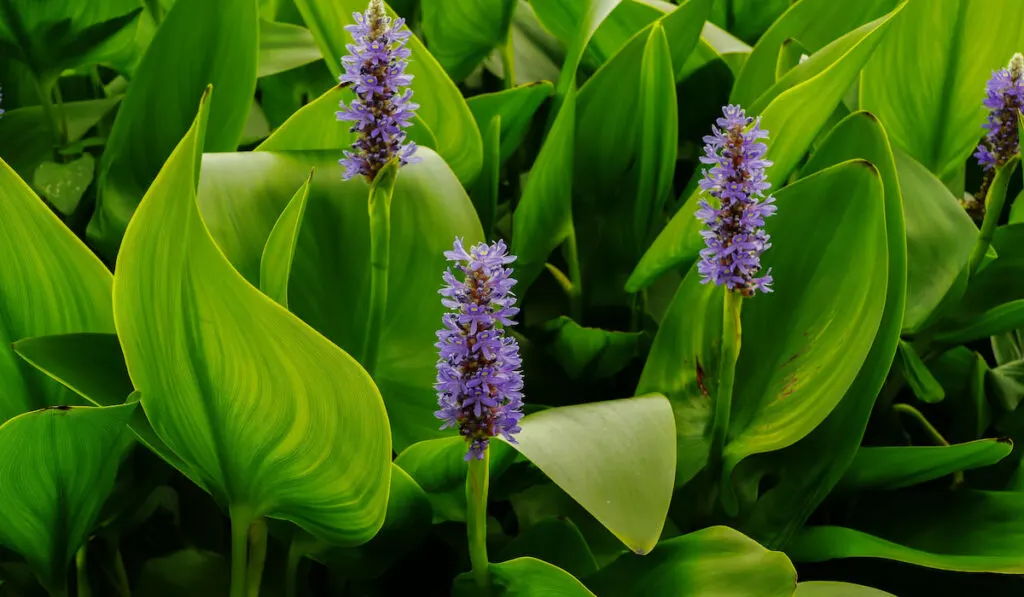
From afar, these plants might look similar to blue irises. But they aren’t related at all. Pickerelweed is considered both a marginal and an emergent plant. They can be found in many places in the world, including the northern and eastern parts of the United States.
Some people also know them as pickerel rush, heart-leaved pickerel weed, and wampee. These aquatic perennials typically grow between 2 and 4 feet tall and spread between 1 and 2 feet wide. They possess elongated bright green leaves, and blue-lavender tubular flowers bloom in summer.
Like most aquatic plants, pickerelweeds thrive in moist and loamy soil. They grow in the hardiness zones 3 to 10 and prefer being exposed to full sun.
Hornwort (Ceratophyllum demersum)
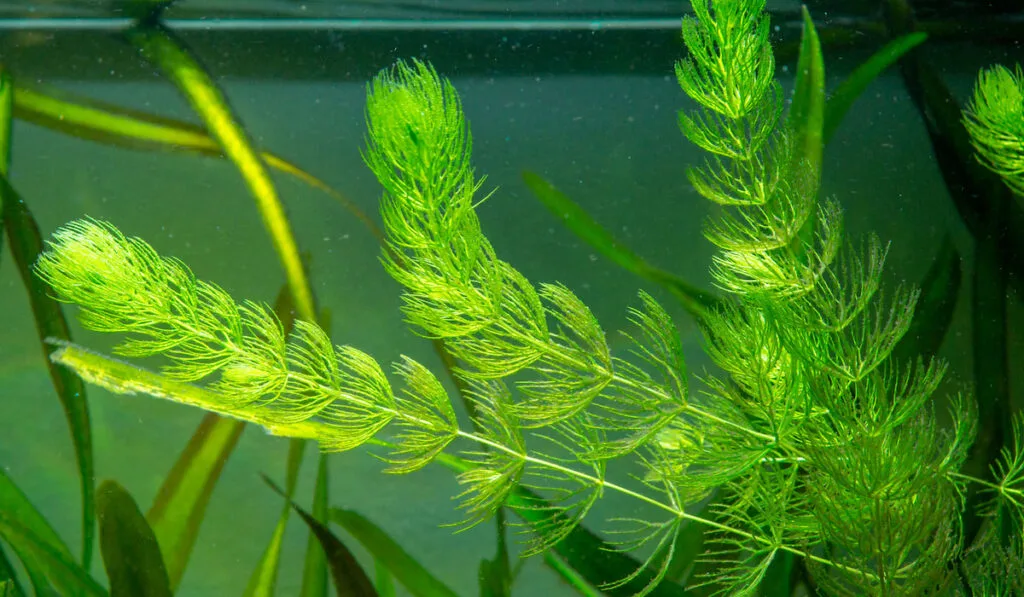
Hornworts are native to North America and can also be found in other regions across the globe. They are also known as coontail or coon’s tail. These submergent plants usually grow around 2 feet long and can reach up to 10 feet wide, provided that the environment is healthy and optimal for their growth.
Hornworts possess stiff, fern-like leaves that whorl in 6 to 12 parts. They also produce small flowers at the lower part of their stem or near the base. These flowers come in different colors, including pink, red, and brown. Being fast growers, these aquatic plants can be quite invasive and can overgrow other plants in their vicinity.
Dwarf Cattail (Typha minima)
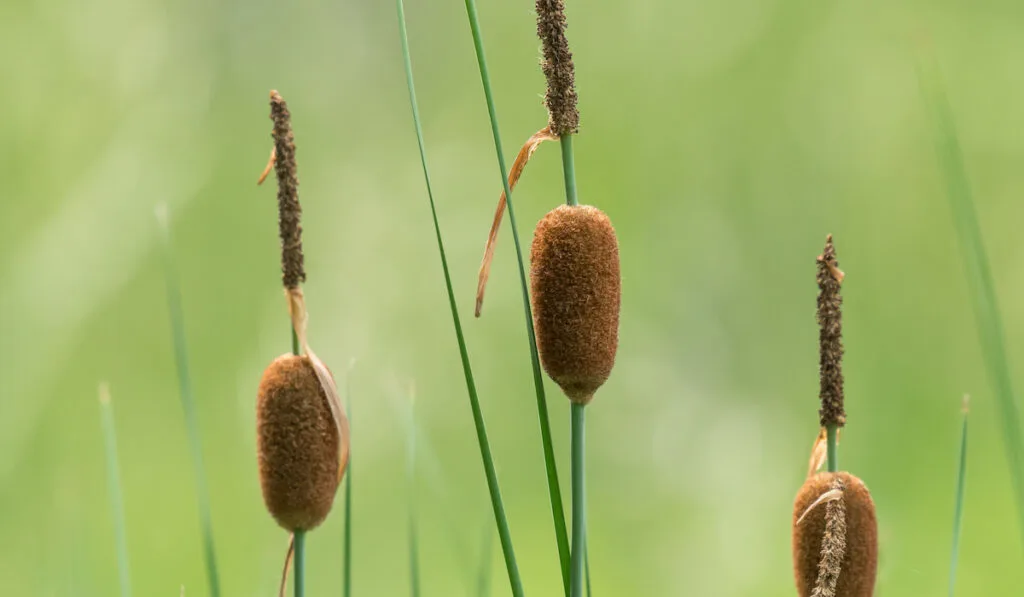
These small bog plants are native to North America but also can be found in other parts of the world, including Europe and Asia. They are also called the least cattail and miniature cattail.
Dwarf cattails may look like your typical land grasses or weeds, but these aquatic perennials commonly grow near wet areas and water bodies such as swamps, ponds, river streams, and water gardens. They can be recognized by their long, slender green stem that turns golden brown in fall. These plants also possess golden brown, furry catkins that surround the stem in summer.
Dwarf cattails grow between 1 and 2 feet tall with the same spread. They thrive in the hardiness zones 3 to 10 and prefer wet and loamy soil.
Floating Fern (Salvinia natans)
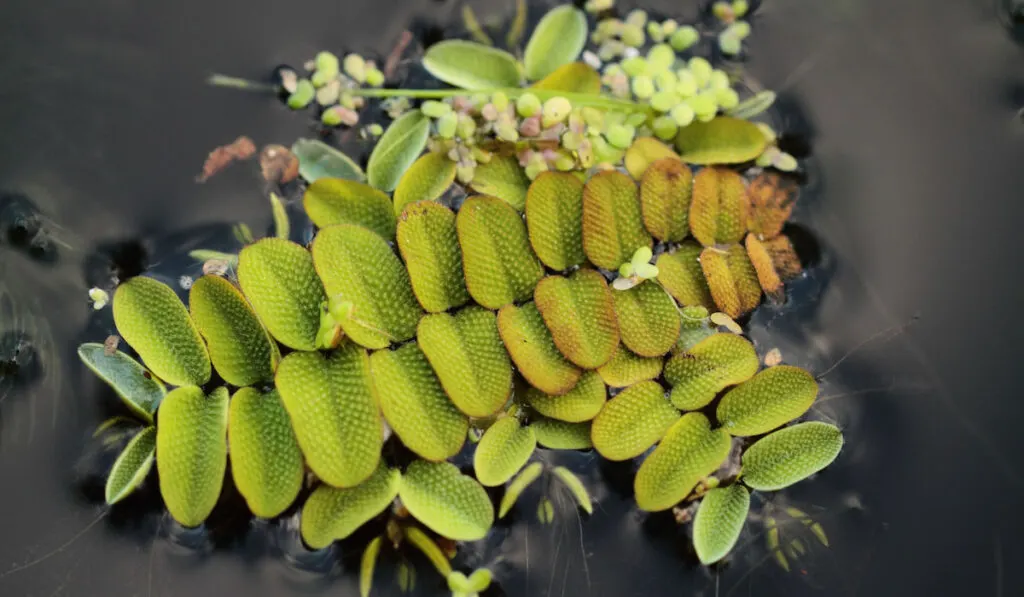
Like their name, these aquatic plants can be found floating on ponds’ surfaces, water gardens, and other still freshwater bodies. Floating ferns are native to many regions, including Asia, Africa, Europe, and South America.
They are also known as floating water moss and water butterfly wings. These cute plants usually grow in web or mat-like structures and float on water surfaces between 1 and 3 feet long. Floating ferns are easily distinguished by their small, green pinnate leaves that grow side by side. These leaves act as sponges that offer buoyancy for the plant to float.
Being floating plants, they offer shade and protection for aquatic creatures and fish below them. Floating ferns can thrive under partial or full sun. They are easy to maintain and thrive in hardiness zones 10 to 11.
Brooklime (Veronica becabunda)

Also known as the horse cress, European speedwell, and water pimpernel, these floating herbs are native to Europe, particularly in the United Kingdom. They thrive in the hardiness zones 4 to 8 and usually grow around 1 foot tall.
Brooklimes are small aquatic floating plants with oval green leaves, and bright blue, four-petaled flowers that bloom in summer. Their roots also can extend up to 6 inches underwater. As long as the soil is wet, brooklimes can tolerate different acidity levels.
Although they are easy to grow, they can become quite invasive and compete with other plants nearby for sun, water, and other minerals. With enough preventive measures and maintenance, they can be used to protect the water surface and provide shade for aquatic creatures.
Creeping Jenny (Lysimachia nummularia)

Creeping jenny plants are native to Europe and Western Asia. They also go by their other name, “moneywort” or “twopenny grasses,” due to their leaves that are shaped like coins.
These crawling perennials can be distinguished by their small, rounded lime-green leaves, and yellow cup-shaped flowers that bloom in summer. Creeping jenny plants are considered versatile plants due to their flexibility of being either floating, submerged, or bog plants.
They can grow and creep between 2 and 4 inches tall and spread as wide in a web-like form. These plants prefer full sun and well-drained soil. They also thrive in hardiness zones 4 to 9 and can tolerate different pH levels in the soil.
Water Lettuce (Pistia stratiotes)
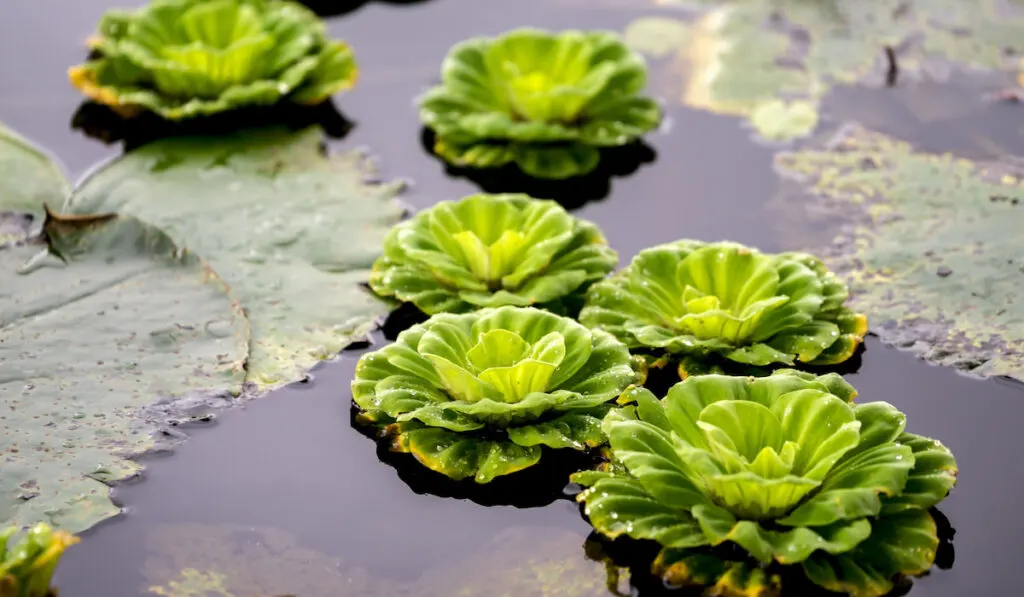
These floating perennials might resemble frogbits, but they aren’t actually related to one another. While frogbits usually float as a single or a group of large leaves, water lettuces do look like lettuce plants with layers of leaves. They are also known as tropical duckweeds and water cabbages.
Water lettuces grow between 3 and 6 feet tall and spread between 1 and 2 feet wide. They have light green waterproof leaves covered with short hairs, fibrous roots, and small white flowers that grow in the center of the plants.
These plants can tolerate partial or full sun. But they also need to have a constant water supply and wet soil. Water lettuces can be pretty invasive when they grow to form mat-like structures that clog water bodies. They can also cover the entire water surface and take up most of the available oxygen in the water.
Pitcher Plants (Sarracenia sp.)

These carnivorous bog plants are probably one of the unique aquatic species you can find occurring naturally in North America, particularly in northeastern and southeastern regions. Pitcher plants are easily recognized by their cup-shaped structure that acts as a trap for insects and other small creatures.
They are also known as trumpet pitchers. There are a few cultivars of pitcher plants that exist in the wild, including cobra pitcher plants (Darlingtonia californica), yellow pitcher plants (Sarracenia flava), and parrot pitcher plants (Sarracenia psittacina).
Pitcher plants thrive in the hardiness zones 3 to 10 and usually grow up to 3 feet tall. They can tolerate partial or full sun and love acidic soil.
Final Thoughts
Pond plants aren’t a nuisance to the aesthetics of your garden or even the environment. Although some species can turn invasive and outgrow the other plants around them, most are responsible for filtering out harmful algae that could contaminate the pond.
They also provide shade and contribute to releasing oxygen inside the pond for the use of other aquatic creatures. Depending on the space available in the pond, some species will work better than others.
Resources
- https://www.waterlily.co.uk/plants/product/nymphaea-pink-sensation/
- https://en.wikipedia.org/wiki/Iris_pseudacorus
- https://www.gardenia.net/guide/irises-for-the-water-garden
- https://www.gardenia.net/plant/limnobium-spongia
- https://www.thespruce.com/growing-canna-lilies-in-containers
- https://www.gardenia.net/plant/cyperus-papyrus
- https://extension.psu.edu/elodea-common-waterweed
- https://www.aquariumnexus.com/waterweeds-elodea/
- https://plants.ces.ncsu.edu/plants/pontederia-cordata/
- https://www.gardenia.net/plant/salvinia-natans
- https://www.fishkeepingworld.com/hornwort/
- https://www.gardenia.net/plant/typha-minima
- https://pondinformer.com/brooklime-veronica-beccabunga/
- https://www.thespruce.com/creeping-jenny-container-plant
- https://www.gardenia.net/plant/pistia-stratiotes
- https://www.gardenia.net/plant-variety/sarracenia
